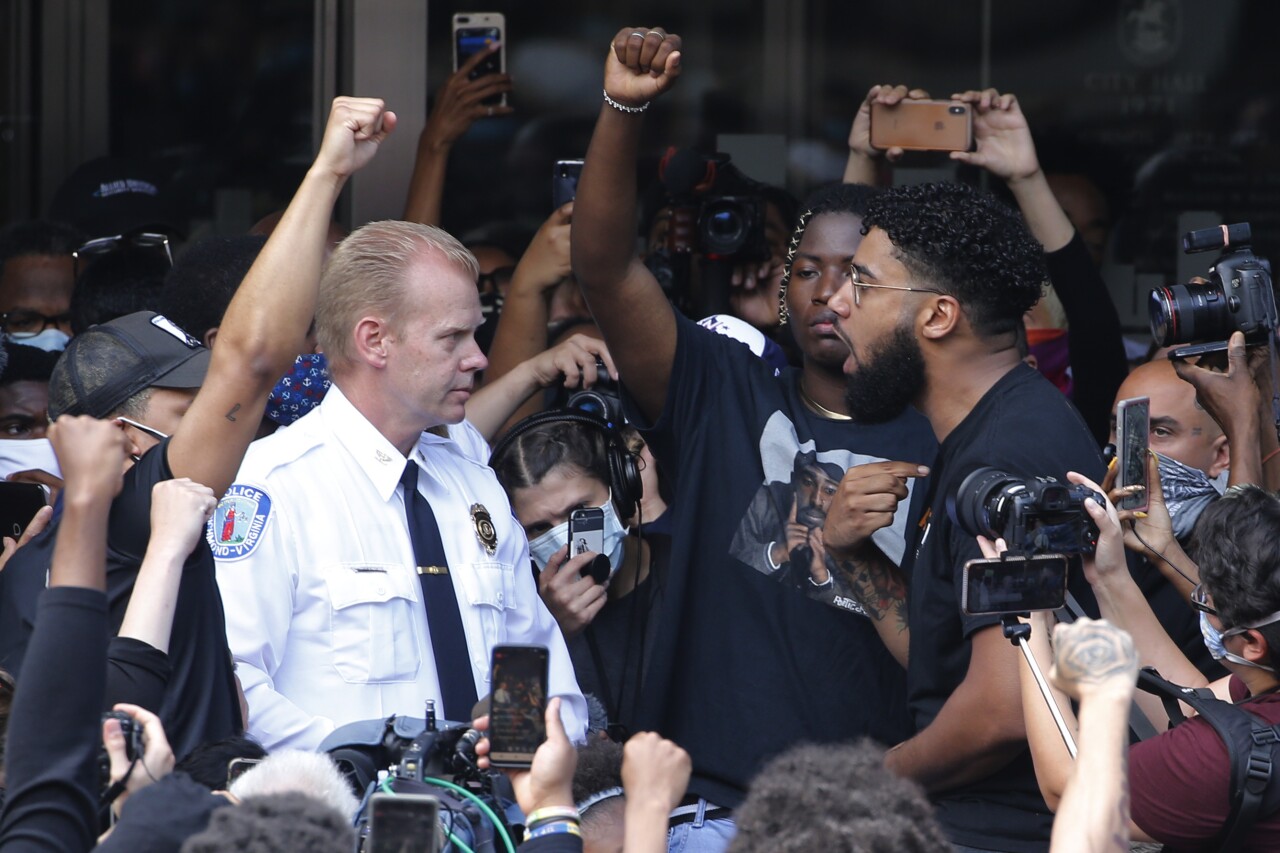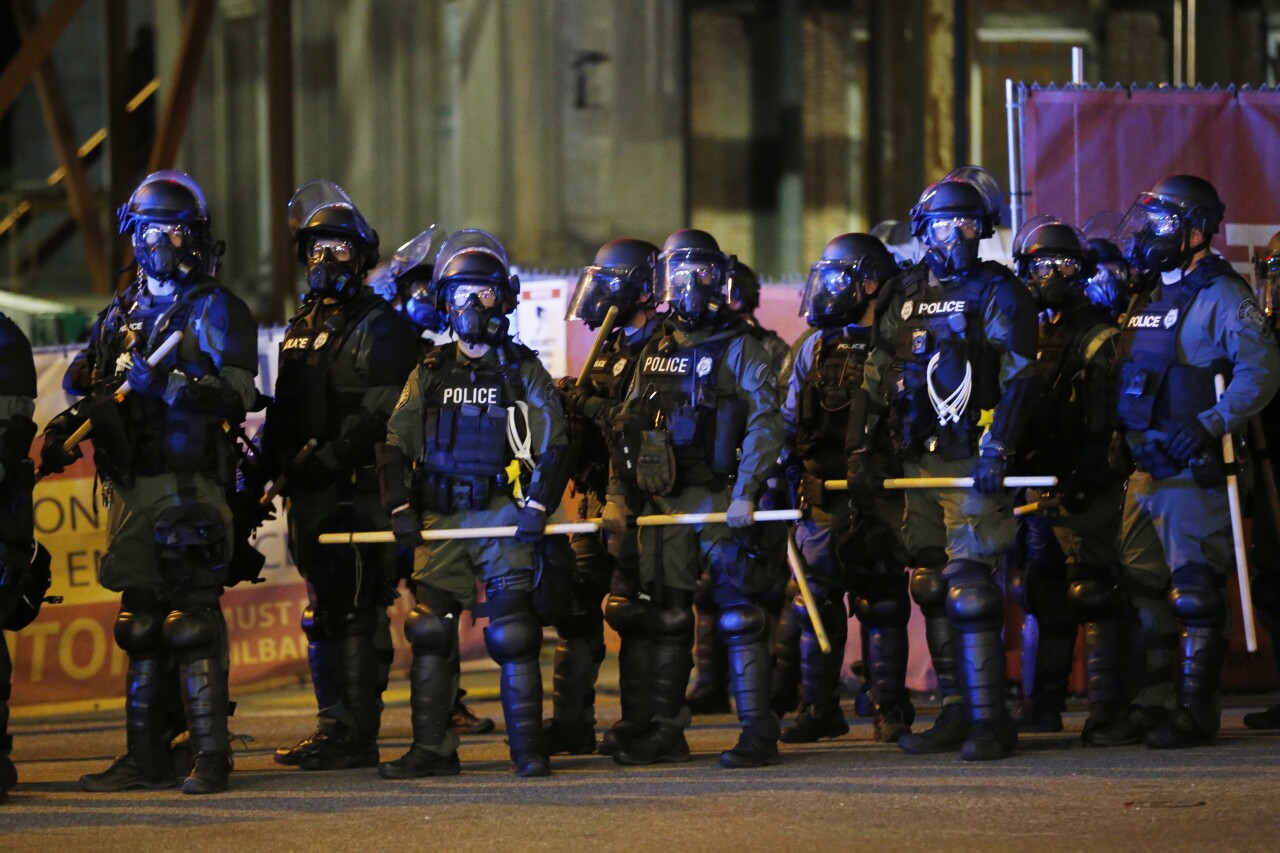RICHMOND, Va. -- Following a weekend incident where a Richmond Police SUV pushed through a crowd of protesters, some of whom were blocking the vehicle, already simmering tensions between protesters and police in the city become more overt Sunday night.
A large group gathered outside Richmond Police headquarters facing a line of officers in riot gear. At least one person was arrested, and police used pepper spray to disperse the crowd at times after officials cleared an unlawful assembly.
Former Richmond Sheriff C.T. Woody, who worked as a Richmond Police officer and homicide detective for 35 years, has been watching the events unfold from afar. Woody said he fully backs the Black Lives Matter movements in Richmond and that city leaders need to take action.
“These young folks are not going to take what we older folks have taken and let go by. They’re much smarter, they’re much wiser, and they don’t mind sacrificing. You have to get their attention; you have to listen to them, and you have to do what’s right by them,” Woody said.
The Saturday night SUV incident, Woody said, was an example of the eroding trust between many protesters and officers tasked with maintaining order. Richmond Police said one of the officers in the SUV was assaulted through an open window, and Woody said given the circumstances, officers are trained to protect themselves as well.
“Most police officers are not trying to drive through a crowd. They have an order, and they’re trying to stay away from the crowd. They are there to protect and to serve,” Woody said. “The best thing for them to do was to use the car as a shield and try to get through the crowd as safely as they can without hurting anyone and also get themselves safely away from the situation.”
Dr. William Pelfrey, a professor of criminal justice and policing at VCU’s Wilder School, agreed the incident showed a distrust between protesters and police, but said the actions of the officers should be considered too.
“That police use of a vehicle didn’t represent a deadly threat. But if the situation would have been reversed, it would have been justified for police to use deadly force against the driver. That means it was a dangerous situation,” Dr. Pelfrey said. “I think that moment of the officers using their vehicle to push through a crowd says a lot about how people view authority figures right now, with a lack of trust and a lack of respect.”
Dr. Pelfrey has studied protester and police interactions throughout American history.
“There were lots of riots and protests in the 60’s and 70’s, and the lessons that emerged from those protests and subsequent riots were that, when the police show up in heavy tactical gear, bad things happen,” Dr. Pelfrey said. “A protest means people want to talk. They have something they need to say. And when police show up in their riot gear, with their helmets and riot batons, then they’re sending the wrong dynamic.”

Both Woody and Pelfrey said officers facing stressful, tense situations on a daily basis contribute to the current climate. Striking the balance between maintaining public safety and respecting the First Amendment rights of protesters can be a difficult task, they said.
“When protesters confront police, they’re viewing them as the arm of the authority, but the police really aren’t. The police the protesters are talking to are line patrol officers with mid-level supervisors,” Pelfrey said. “As long as protesters remain calm, they’re going to have a forum for talking and to air their grievances. But once the calm is gone, then police have a responsibility to maintain public safety.”

Richmond Mayor Levar Stoney and the Richmond’s Commonwealth Attorney have promised investigations into any reported criminal acts by both protesters and police over the past several weeks. Woody and Pelfrey said making that process as transparent as possible is the only way to start rebuilding community trust.
“We have to prioritize. Get rid of the bad ones: yes. Retrain: yes, always. But you got to change. No change; no progress,” Woody said.
“If everything happens in a black box, where nobody really knows what happens, how the investigation proceeds, how the punishments or sanctions proceed, then they lose trust in the police,” Dr. Pelfrey said.
The history of police reform is “replete” with moments of crisis. He said the current moment reminds him in some ways of the L.A. protests and riots following the beating of Rodney King in 1991. The reforms to the LAPD took years, he said.




